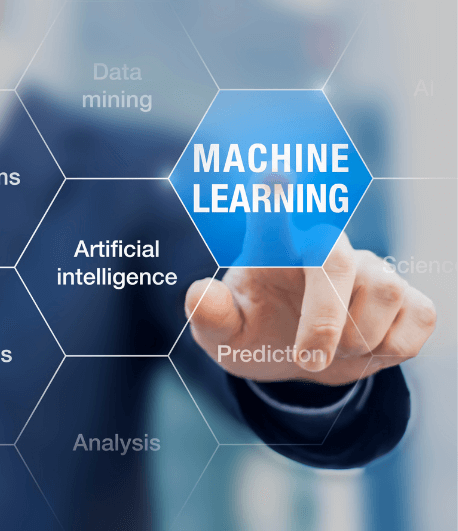
Artificial intelligence is the ultimate way of automatically learning what you want. It can simulate the actions of people; it can learn from experience, and it can adapt. The best AI applications can have their outcomes reflected in the real world: athletes’ performance, for example, can be accurately predicted based on their performances. At its best, this kind of automated learning is entirely self-sufficient. However, it may not be possible for a human being to notice the error. The human can see the error in the terminal output but does not understand it. In other cases, it may seem that the computer is operating in a deterministic way.
 Illustrative evidence
Illustrative evidence
Before AI was a big business in sports, it was an art. With computers, computers were not capable of evaluating their performances well enough to have the athletes compete. The machines were not the experts, but the sport’s governing bodies were. For example, the 1983-88 period produced two Olympic Games in America and South Korea, and two World Cup games, in England and India. With the introduction of personal computers on each of those teams, they could work together more effectively because they could come to agree on everything. This was a cell that developed into a complete entity today called Artificial Intelligence.
AI in the sports industry can be used to analyze the movement of athletes and make decisions on whether they should take part in an Olympic Games. For example, when athletes train in the heat, it’s no longer only about creating an exact program to train to mimic the athlete’s body type. Instead, the performance science algorithms from sports science teams constantly update data to incorporate every little movement and reaction of athletes to improve their performance for the Games.
Artificial Intelligence in sports is the newest addition. We have seen several cases in which sports teams have relied on artificial intelligence to determine the best play to call their athletes for specific events. A few examples of this type of play: Saints, in the Premier League, have a strategy for using analytics to decide which play to take off in the dying seconds of games – as long as it’s not the first goal. Manchester United took the world by storm with their famous win over Crystal Palace. Wenger and company put together a remarkable display of defensive discipline. The highlight of that defensive display was the extraordinary resilience of their attacking style.
What is the Face of sports AI?
Artificial Intelligence in sports came across as bearing many titles like Automated training, AI prediction, and analytical sports, enabling professional athletes to perform better in competitions. The technology has been applied in several sports such as baseball, basketball, soccer, and football. In addition, in sports that do not use highly skilled athletes, such as skaters, tennis, and cycling, such analytics tools can better train these athletes to perform better. The challenge with traditional sport systems is that they can be extremely time-consuming to use, and the size of the playing field also limits players’ training. In contrast, a cycling system allows training and racing to occur on a much larger scale, with the athletes competing on a much wider playing field.
Sports AI follows a model that is still able to learn from experiences and adapt to changing situations. The AI can also use some of its own expertise to improve its knowledge of the world, in addition to the ability to respond to new challenges in the games it competes in. When AI plays a role in sports, one of its primary goals is to improve the human interaction when a player scores a goal. One possible technique to accomplish this goal is to train the agents with deficient intelligence that, in large part, memorize and analyze the actions, including their intended actions, and react to those actions based on their learned information.
 The athletes of tomorrow are the athletes of tomorrow. So the sport has to evolve into a machine-learning system that we could use to predict the outcome of a game, recognize the right time to attack a goal or make a difference in the result of an intense match. We could also use it to predict the outcome of a football match, the result of an international rugby match, or how well a basketball player will perform in an upcoming game.
The athletes of tomorrow are the athletes of tomorrow. So the sport has to evolve into a machine-learning system that we could use to predict the outcome of a game, recognize the right time to attack a goal or make a difference in the result of an intense match. We could also use it to predict the outcome of a football match, the result of an international rugby match, or how well a basketball player will perform in an upcoming game.
Better conclusion to modern sports with full stop far ahead
AI in sports analytics is beginning to pay huge dividends and is already affecting an ever-growing number of organizations. We see the impact of AI in the sports industry through influential sports such as cricket, racing, football, tennis, basketball and many more. Artificial Intelligence in sports is an exciting area because it brings together a wide range of interesting applications. There is considerable research in this area with significant potential for big breakthroughs and enormous benefits for the sport. The challenges posed in AI in sport have been investigated throughout the years, and a large body of evidence has recognized their potential.
Employment predictive analytics and machine learning in sports management are on the rise, leading to much progress in this area. Many sports organizations, namely the International Olympic Committee (IOC), are creating standards to address the issues of gender pay in sports and individual sports. Additionally, professional sports organizations are moving in this direction with training camps and workshops that help athletes understand the different models to follow for making money in the sport. This helps bring about better balance and more money available for other sports to thrive. So the advantages of the Sports API, Data Sports Group, are pretty evident from the about context and persuasive to utilize their services.










